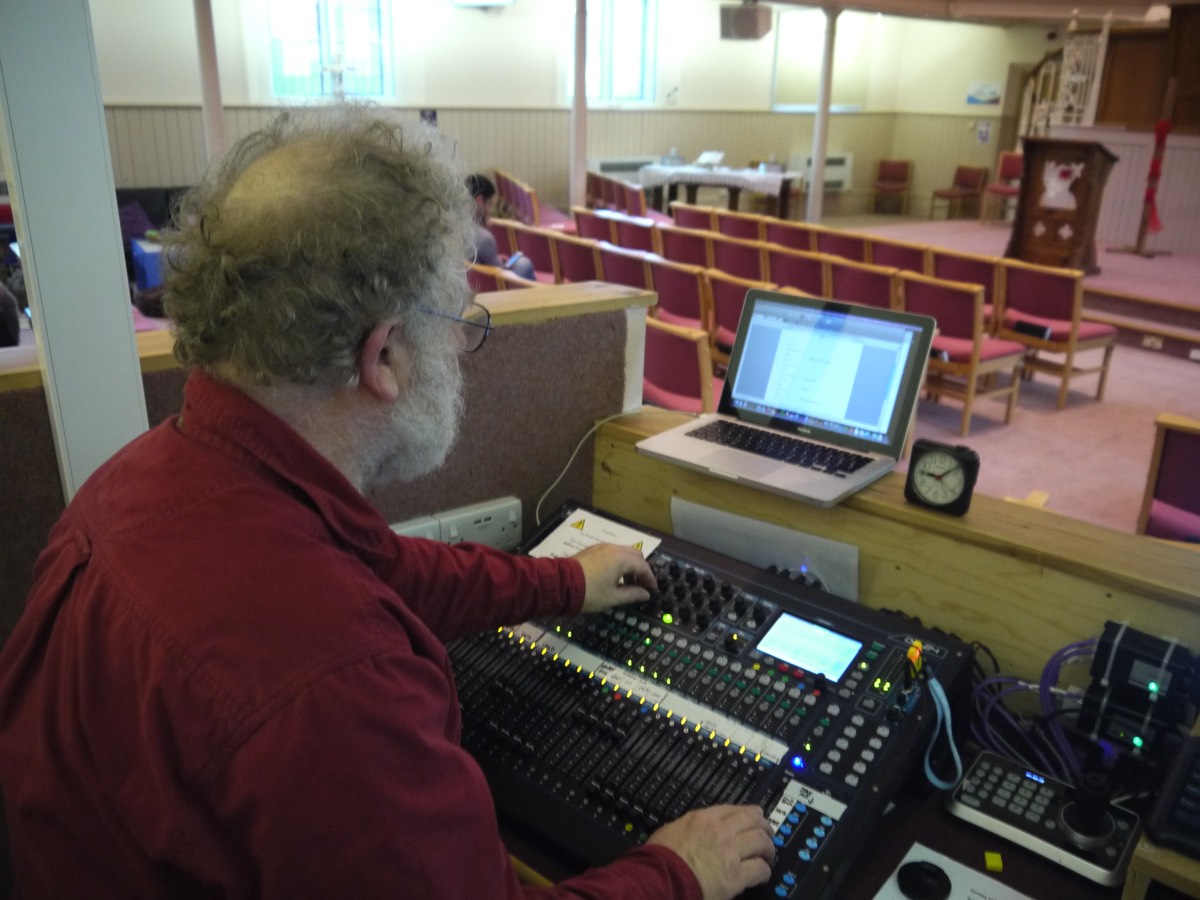
I’ve been dealing with sound systems of various types and levels of sophistication since I was a teenager, and I was in the situation of knowing most of the theory (from my electronics degree and years of designing signal processing equipment as part of my job), but not necessarily how to use it in a sound engineering context. When the church got its new system, with filters, parametric and graphic equalisers, gates and compressors on, I decided I’d like to know how to use them all.
At the church: we have an Allen + Heath Qu-24 sound desk connected via a dSnake cat5 digital snake to an A+H AB168 stage box. The dSnake expansion port on the stage box is wired to a socket in the front edge of the platform, and we have a second AB168 that we can connect to it, if, for example, we have a band on stage. The desk drives a couple of LabGruppen IPD 1200 stereo amps, one servicing the upstairs speakers and the other the downstairs speakers, and also a wedge monitor for the singers, who also have in-ear monitors. We have a loop system for those with hearing aids. Up front we have Sennheiser headband radio mics for the speakers, a Sennheiser handheld radio mic for incidental use, an Audio Technica radio mic on a stalk on the lectern and a set of SM58’s on stands for the singers.
Currently, we have no musicians, so music is provided by either an iPad on a stand up front, controlled by one of the singers, or from a PC by the sound desk. Both the iPad and the PC run a program called iSingWorship (www.isingworship.org) that drives both the projector and the sound system to do the music and the words, so they stay in sync, and allows those controlling it to repeat verses or choruses or miss them out ‘on the fly’. It is very intuitive. We also have SongPro (www.creationsoftware.com) installed on the PC, which allows us to present songs not on iSingWorship, put up notices, Bible Readings, PowerPoints and videos as required as part for the service. Oh, and we record the services on a USB memory stick (the Qu-Drive) and podcast the sermons on the church website and the iTunes Store.
Having done the course, they’d like me to pass on what I’ve learned, so I’m planning that when I feel I’m ready. With the singers, I have a reputation as one who knows how to make what they want happen. It helps that I used to sing in a choir myself, so I’ve seen both sides. The course was very useful and has helped me get the most out of the equipment we use and I would recommend it for any one needing to operate the sound in their church or venue.
Dave
Scroll



